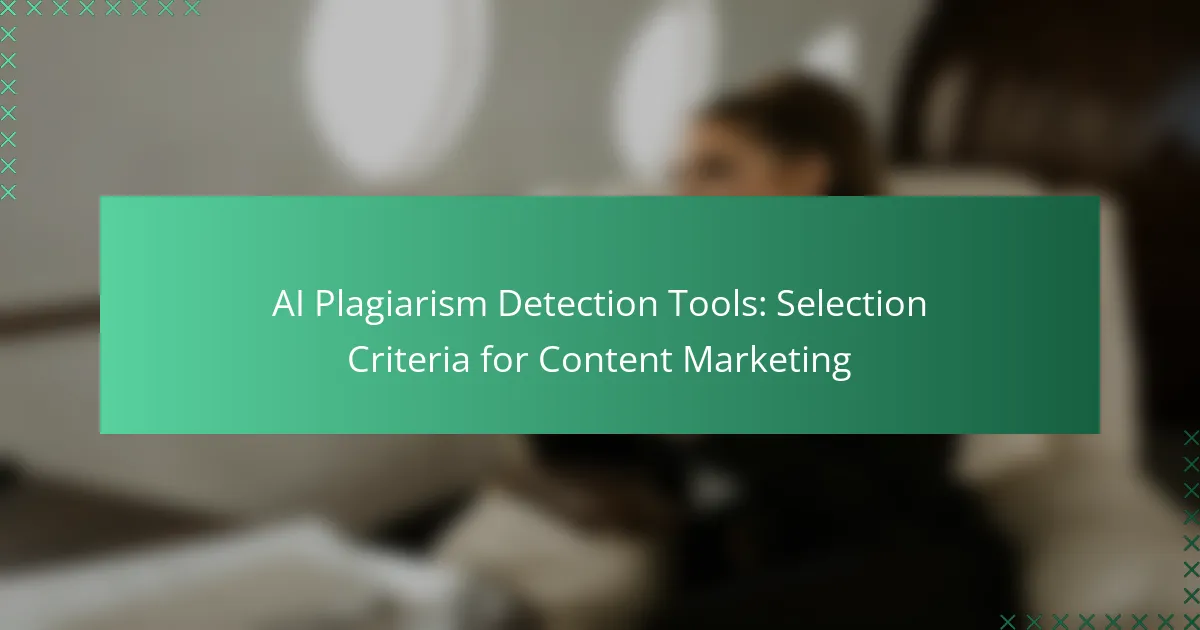In the realm of content marketing, AI plagiarism detection tools play a crucial role in ensuring originality and maintaining high-quality standards. These tools utilize advanced algorithms to analyze text for similarities with existing content, helping marketers create unique material while adhering to copyright regulations. When choosing the right tool, it’s essential to consider features such as real-time scanning, integration capabilities, and comprehensive reporting to enhance your content marketing strategy.
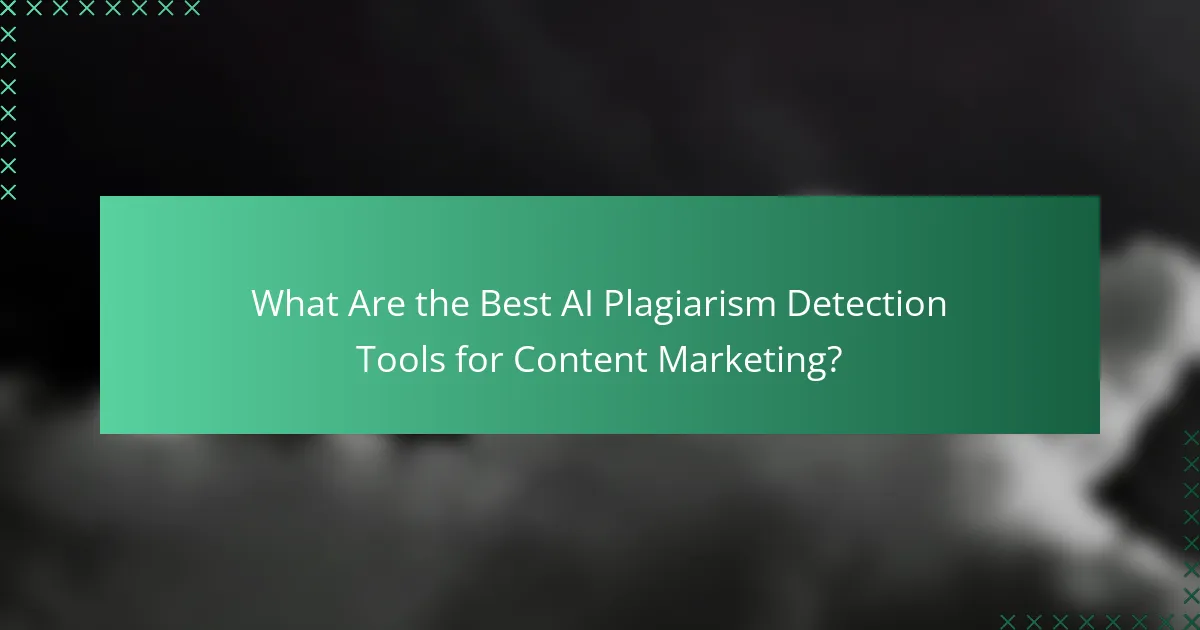
What Are the Best AI Plagiarism Detection Tools for Content Marketing?
The best AI plagiarism detection tools for content marketing help ensure originality and maintain content quality. These tools analyze text for similarities with existing content, providing insights on potential plagiarism and helping marketers create unique material.
Grammarly
Grammarly is widely recognized for its grammar checking capabilities, but it also includes a plagiarism detection feature. It scans your text against billions of web pages and academic papers to identify similarities, making it a great tool for content marketers who prioritize quality and originality.
When using Grammarly, consider its integration with various writing platforms, which allows for seamless checking as you write. However, the plagiarism feature is only available in the premium version, so budget accordingly if you plan to use this functionality.
Turnitin
Turnitin is primarily used in educational settings to prevent academic dishonesty, but it can also be beneficial for content marketing. It compares submissions against a vast database of academic works and online content, providing a comprehensive report on originality.
While Turnitin is effective, it is often more expensive than other tools and may require institutional access. If you are a freelance marketer or small business, consider whether the investment aligns with your needs for content verification.
Copyscape
Copyscape is a dedicated plagiarism detection tool that checks the web for duplicate content. It is particularly useful for content marketers who want to ensure their articles are unique before publication.
Copyscape offers a free service for basic checks, but for more in-depth analysis, a premium version is available. This premium service allows you to search for copies of your content across the internet, making it a valuable resource for maintaining originality.
Quetext
Quetext provides a straightforward interface for plagiarism detection, utilizing DeepSearch technology to identify similarities in text. It is suitable for content marketers looking for a quick and efficient way to check for originality.
The tool offers both free and pro versions, with the pro version providing more extensive checks and additional features like citation assistance. This can be particularly helpful for marketers who need to reference sources correctly.
Plagscan
Plagscan is a versatile plagiarism detection tool that caters to both educational and professional needs. It analyzes documents against a large database of online content and academic publications, making it useful for content marketers who want to ensure their work is original.
Plagscan offers flexible pricing plans based on usage, which can be advantageous for businesses of different sizes. Additionally, it provides detailed reports that highlight potential issues, allowing marketers to make necessary adjustments before publication.
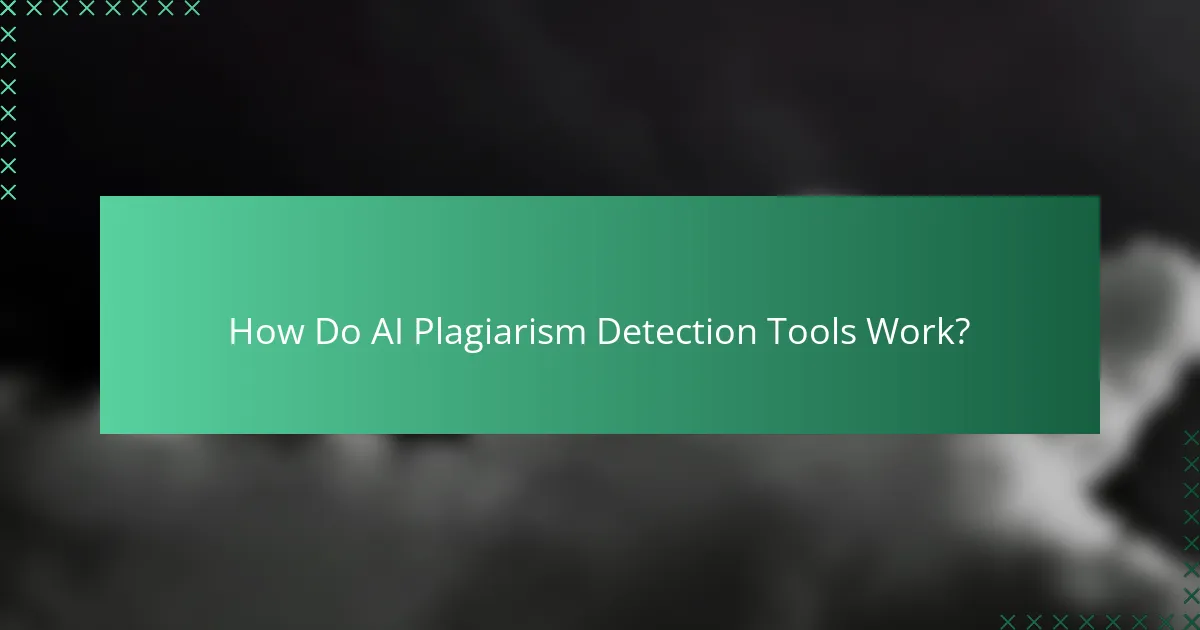
How Do AI Plagiarism Detection Tools Work?
AI plagiarism detection tools analyze text to identify similarities with existing content, ensuring originality and compliance with copyright standards. They utilize various algorithms and machine learning techniques to assess and compare documents against extensive databases.
Text comparison algorithms
Text comparison algorithms are fundamental to plagiarism detection, as they evaluate the similarity between two texts. These algorithms can be based on methods such as string matching, where exact phrases are compared, or semantic analysis, which considers the meaning of words and phrases.
Common techniques include the Levenshtein distance, which measures how many single-character edits are needed to change one string into another, and cosine similarity, which assesses the angle between two text vectors in a multi-dimensional space. Choosing the right algorithm depends on the specific needs of your content marketing strategy.
Machine learning techniques
Machine learning techniques enhance plagiarism detection by allowing tools to learn from vast datasets and improve their accuracy over time. These methods can identify patterns and nuances in language that traditional algorithms might miss, making them more effective in recognizing paraphrased or subtly altered content.
Examples of machine learning applications include natural language processing (NLP) models that can analyze context and intent, and supervised learning approaches that train on labeled data to distinguish original content from plagiarized material. When selecting a tool, consider its machine learning capabilities to ensure it meets your content integrity requirements.
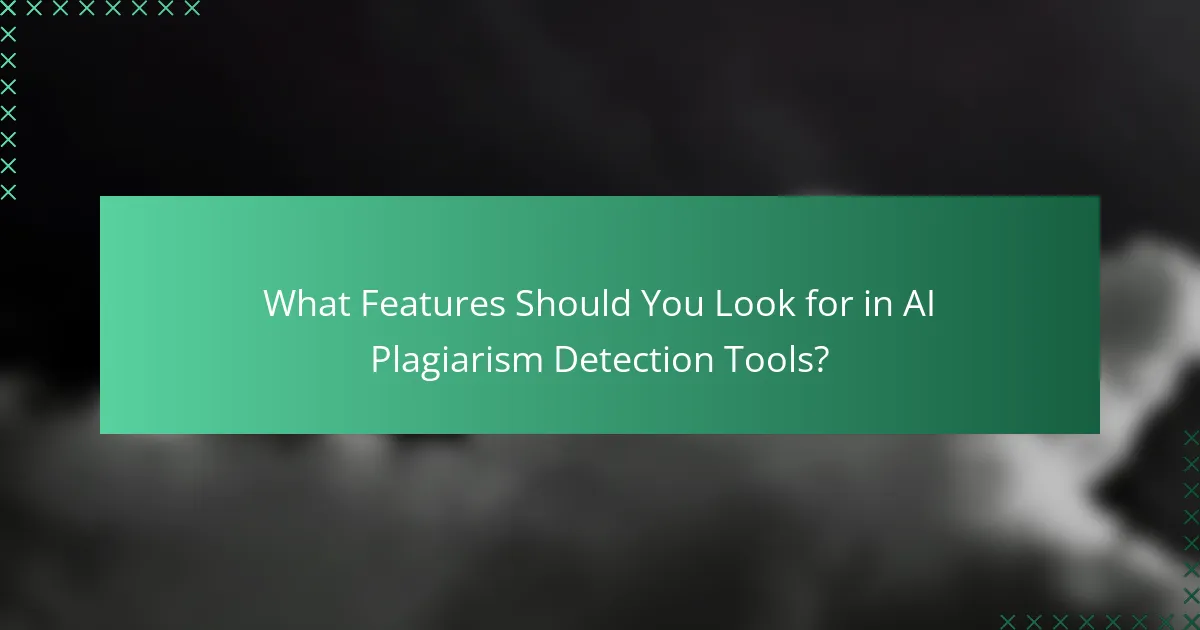
What Features Should You Look for in AI Plagiarism Detection Tools?
When selecting AI plagiarism detection tools, focus on features that enhance accuracy, usability, and integration with your existing systems. Key aspects include real-time scanning, integration capabilities, and comprehensive reporting features that help streamline your content marketing efforts.
Real-time scanning
Real-time scanning allows you to check content for plagiarism as it is created or edited, ensuring immediate feedback. This feature is crucial for content marketers who need to maintain originality and avoid potential copyright issues.
Look for tools that provide instant alerts when duplicate content is detected, allowing for quick revisions. A good real-time scanner should operate with minimal delay, ideally within seconds, to keep your workflow efficient.
Integration capabilities
Integration capabilities are essential for seamless operation within your existing content management systems (CMS) and marketing platforms. Tools that easily connect with popular CMS like WordPress or HubSpot can save time and reduce friction in your content creation process.
Consider tools that offer API access or plugins for easy integration. This ensures that you can incorporate plagiarism checks without disrupting your established workflows, enhancing productivity and collaboration among team members.
Reporting features
Comprehensive reporting features provide insights into plagiarism detection results, helping you understand the originality of your content. Look for tools that generate detailed reports, highlighting specific sections of text that may be problematic.
Effective reporting should include metrics such as similarity percentages and sources of potential plagiarism. This information can guide your revisions and improve your overall content quality, making it easier to meet industry standards for originality.
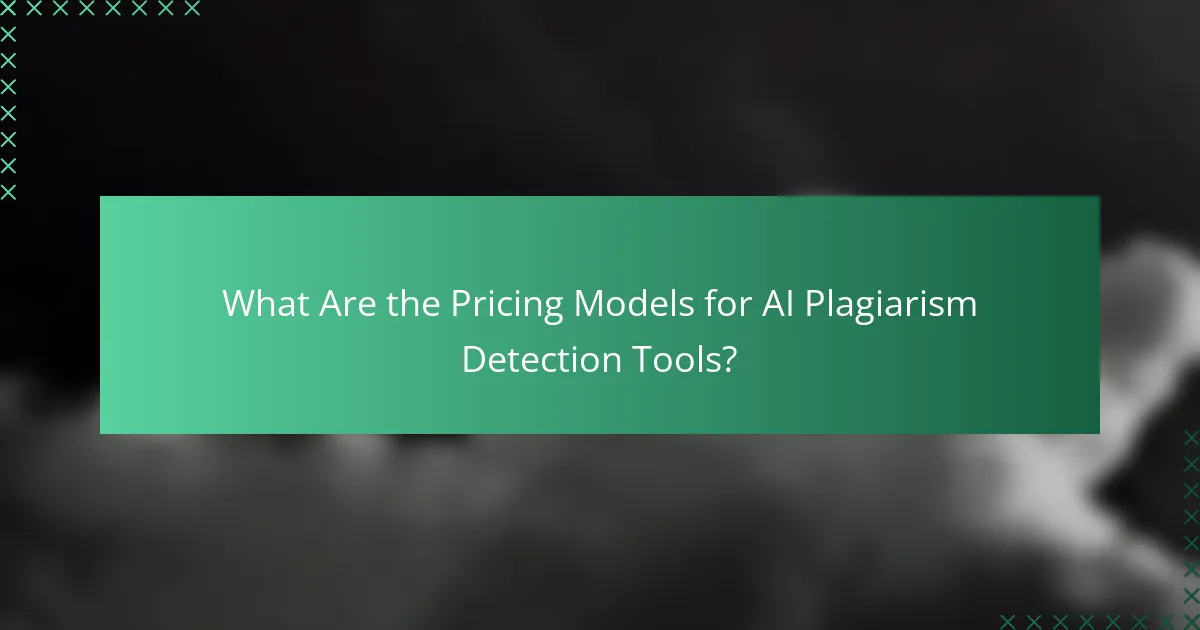
What Are the Pricing Models for AI Plagiarism Detection Tools?
AI plagiarism detection tools typically offer various pricing models to accommodate different user needs and budgets. The most common models include subscription plans and pay-per-use options, each with distinct advantages and considerations.
Subscription plans
Subscription plans provide users with ongoing access to plagiarism detection services for a fixed monthly or annual fee. These plans often include features like unlimited checks, advanced reporting, and priority support, making them ideal for businesses or content creators who require frequent use.
Pricing for subscription plans can vary widely, generally ranging from around $10 to $50 per month, depending on the level of service and additional features included. It’s essential to compare what each plan offers to ensure it meets your specific needs.
Pay-per-use options
Pay-per-use options allow users to pay for each plagiarism check individually, which can be more cost-effective for those who need the service infrequently. This model is beneficial for occasional users or smaller projects where the volume of content is limited.
Prices for pay-per-use checks typically range from $1 to $5 per report, depending on the tool’s capabilities. When choosing this option, consider the total number of checks you anticipate needing to determine if it’s more economical than a subscription plan.
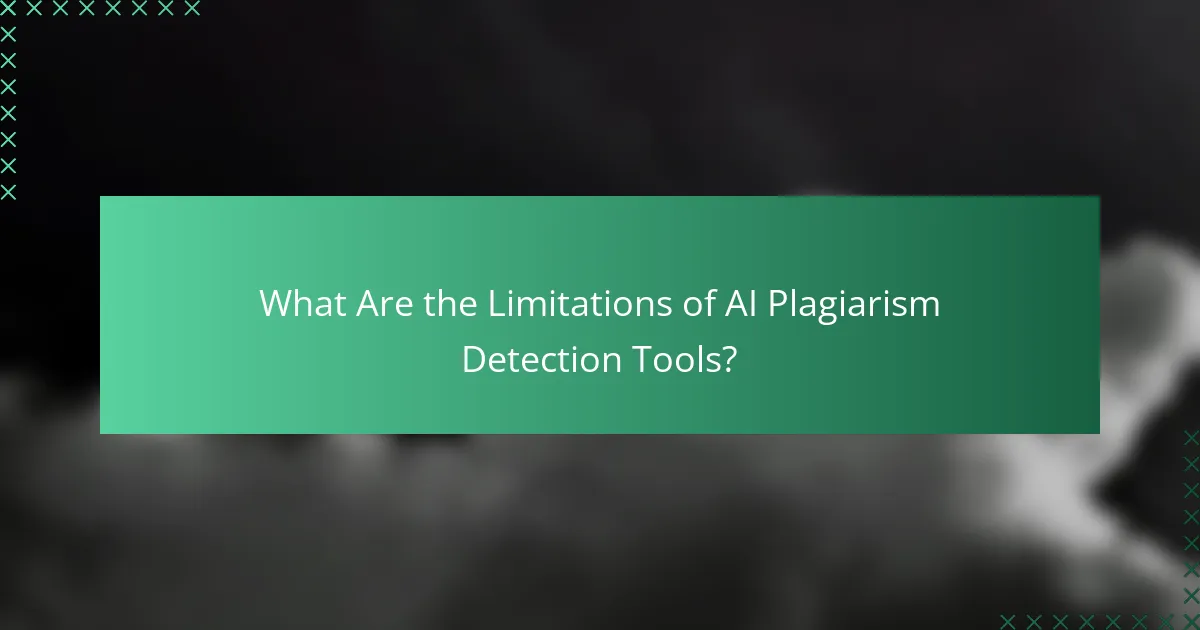
What Are the Limitations of AI Plagiarism Detection Tools?
AI plagiarism detection tools have several limitations that can affect their accuracy and reliability. Understanding these constraints is essential for content marketers who rely on these tools to ensure originality in their work.
False positives
False positives occur when a plagiarism detection tool incorrectly identifies original content as plagiarized. This can happen due to similarities in phrasing or common knowledge expressions that are not unique to any one source.
To mitigate false positives, users should review flagged content carefully and consider the context of the matches. A tool that generates a high number of false positives may not be suitable for professional use, as it can lead to unnecessary revisions and confusion.
Limited database coverage
Many AI plagiarism detection tools have limited access to databases, which can restrict their ability to identify all instances of plagiarism. Some tools may only scan publicly available content, missing proprietary or subscription-based materials.
When selecting a tool, consider its database size and the types of sources it covers. Tools with broader coverage are more likely to provide accurate results. Additionally, combining multiple tools may enhance detection capabilities, especially for specialized content.
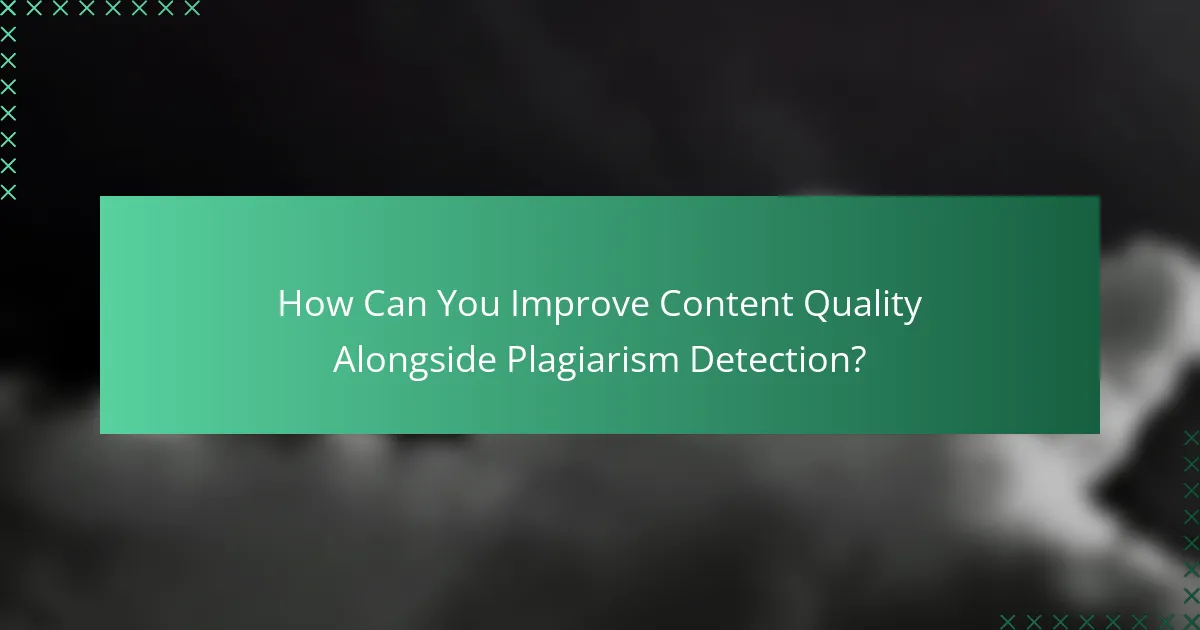
How Can You Improve Content Quality Alongside Plagiarism Detection?
Improving content quality while using plagiarism detection tools involves implementing strategies that enhance originality and clarity. By focusing on content originality practices and utilizing effective editing tools, you can create unique and high-quality material that resonates with your audience.
Content originality practices
To ensure content originality, start by conducting thorough research on your topic. This helps you gather diverse perspectives and insights, allowing you to create unique content rather than rehashing existing material. Consider using tools that check for originality before publishing, as they can highlight similarities with existing works.
Additionally, develop your own voice and style. This not only differentiates your content but also makes it more engaging for readers. Regularly brainstorming and outlining your ideas can help maintain originality and prevent unintentional plagiarism.
Editing and proofreading tools
Editing and proofreading tools are essential for refining your content and ensuring it meets quality standards. Tools like Grammarly or Hemingway can help identify grammatical errors and improve readability, making your writing clearer and more professional. These tools often provide suggestions for enhancing sentence structure and word choice.
When selecting editing tools, consider those that offer plagiarism detection features as well. This dual functionality can save time and ensure that your content is both original and polished. Always review the final draft manually, as automated tools may miss nuanced errors or stylistic issues.
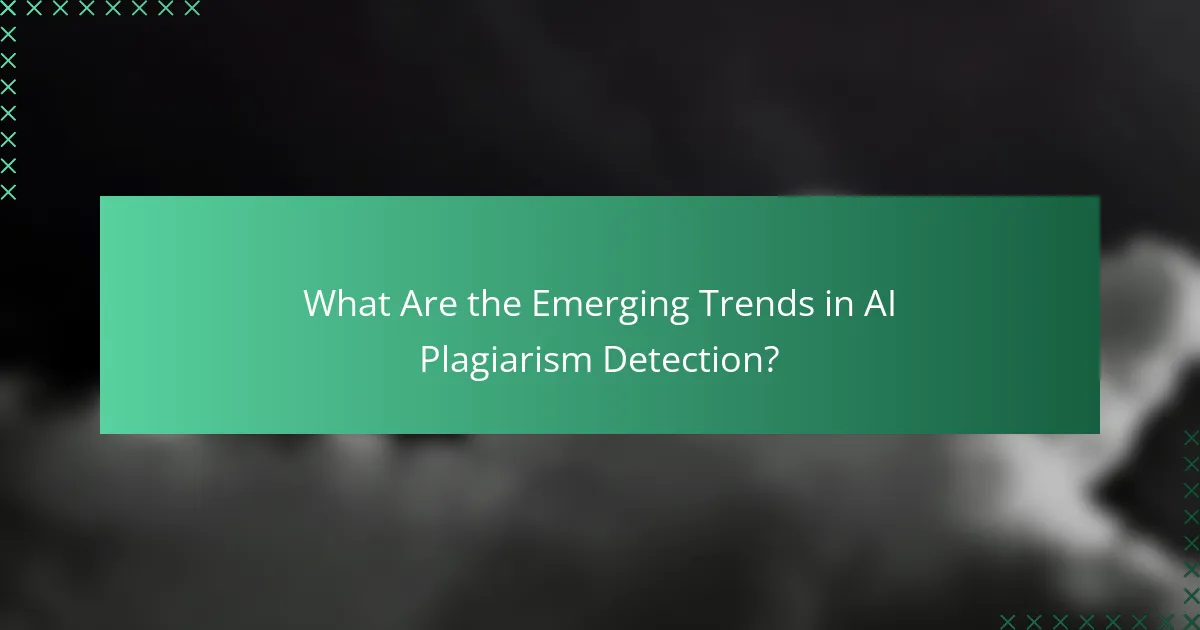
What Are the Emerging Trends in AI Plagiarism Detection?
Emerging trends in AI plagiarism detection focus on improving accuracy, speed, and user-friendliness. These tools are increasingly utilizing advanced algorithms and machine learning to identify not just direct copying, but also paraphrasing and idea theft.
Increased Accuracy Through Machine Learning
Machine learning algorithms enhance the accuracy of plagiarism detection by learning from vast datasets. These systems can recognize patterns in writing styles and detect similarities that traditional methods might miss. For instance, they can differentiate between common phrases and genuine plagiarism.
As a result, users can expect more reliable results, reducing false positives and negatives. This is particularly important for content marketers who rely on original content to maintain credibility and avoid legal issues.
Real-Time Detection Capabilities
Many modern AI plagiarism detection tools now offer real-time analysis, allowing users to check content as they write. This immediate feedback helps content creators make necessary adjustments on the spot, ensuring originality before publication.
For example, tools integrated into content management systems can alert writers to potential issues instantly, which is invaluable for maintaining a steady flow of fresh content without the risk of unintentional plagiarism.
User-Friendly Interfaces and Integration
Emerging tools are prioritizing user experience with intuitive interfaces that simplify the detection process. Many platforms now offer seamless integration with popular writing software and content management systems, making it easier for marketers to adopt these technologies.
For instance, plugins for WordPress or Google Docs allow users to check their work without leaving their writing environment. This convenience encourages regular use and helps maintain high content standards.
Focus on Paraphrasing and Idea Theft
Current trends are shifting towards detecting not just direct copying but also paraphrased content and idea theft. Advanced algorithms can analyze the structure and context of sentences, identifying when ideas have been rephrased without proper attribution.
This is crucial for content marketers who must ensure that their work is not only original but also ethically sound. Tools that highlight potential issues with paraphrasing can help avoid disputes and protect intellectual property.
